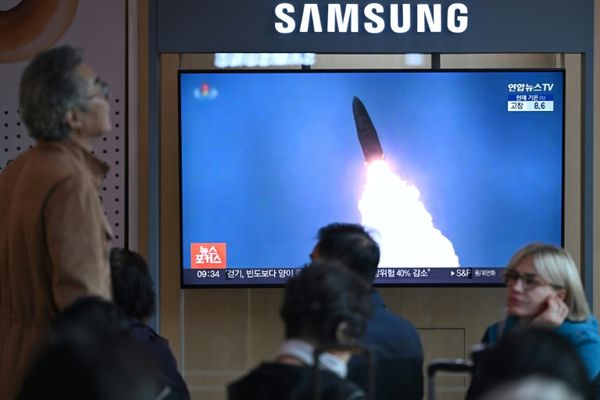Post-earnings behavior in Palo Alto Networks on Wednesday suggested that investors in the stock wanted to see more than a nominal beat on the cybersecurity player's shares. Regardless of traders' attitudes, though, Palo Alto remains a behemoth in the space.
So as investors move through markets that are volatile, it's worth looking at a leap-covered call far into the future to step over any "sticky bits" as Palo Alto stock progresses. There's also a premium to be had from a leap short put that is well out of the money and sitting at a support level.
The LEAP stands for securities targeted for long-term equity anticipation. Basically it's an option with an expiration far into the future.
Investors can choose to take both sides or just one side of this position. Taking the combination is also known as a covered strangle option strategy. Though the short put side isn't technically covered, the risk is still limited much like a stock position. The worst that can happen is the unlikely event that the stock falls to zero. Of course, we would hopefully exit long before that happened with risk management rules. It's also worth noting that if the short put is included, losses can pile up twice as fast once the stock crosses below the short put strike.
Buying Palo Alto Stock In 100-Share Lots
By buying stock in 100-share lots, each trader defines how much they want to accept with the size. Here's an example that shows a 100-share position. There's also a possibility of acquiring another 100 shares at a future date but at a cheaper price.
- Buy to open 100 shares of PANW @ 186.14
- Sell to open one PANW 190 call expiring Jan. 15, 2027 @38.10
- Sell to open one PANW 145 put expiring Jan. 15, 2027 @12.80
The first two legs comprise the leap-covered call. This is a long-term bullish formation. It does, however, require more capital as it involves the purchase of stock at the current price. Notice the call strike is near the money to capture a high premium. But it sacrifices upside potential by capping profits above 190 at expiration. Shifting the call strike higher would offer more profit potential as the stock rises, but also offer less premium.
Meanwhile, the third leg is the leap short put. In this case, it pays the trader to carry the obligation of buying stock with the potential to acquire the stock at a deep discount. However, as the stock drops below the short put strike, the losses can pile up quickly.
At that point you are effectively working with a double position and your losses will reflect that. Both the short put and short call use the same expiration. That is the "strangle" part of the trade as they are at different strikes.
Risks And Rewards
To calculate the maximum risk, we can take each part separately.
The covered call portion of the trade has a maximum loss of $14,804 in the unlikely event that Palo Alto stock dropped to zero. That's the price of the stock less the premium received for the call.
The short put has a maximum loss of $13,220 if Palo Alto stock went to zero. That's the cost of the stock at 145, if assigned, minus the premium received for the put.
Taken together, there is a maximum loss of $28,024 if the stock goes to zero. As mentioned, if Palo Alto falls below 145 at expiration, the losses become magnified as a double position.
To calculate you take the short put strike (145) and subtract half the difference of the total premiums (50.90) and the difference of the stock price (186.14) and lower strike price (145). In other words, 145.00 - 0.5 * [50.90 - (186.14-145)] = 140.12. That breakeven price is a full 25% below the current price and just under the support level of the April 7 low at 145.
The maximum profit occurs if Palo Alto finishes at 190 or above at expiration. That secures a profit of the total premiums received ($5,090) plus the appreciation of the stock up to 190 ($386) for a total of $5,476.
Managing The Trade
There are two risks to consider. One, the price of Palo Alto stock drops below support at 145, and two, the opportunity cost if shares expand well beyond the short call strike at 190.
In handling trade management, it's important to identify key chart levels. The relative resistance zone sits right around 210 a share, while monthly support sits near 145 a share.
Possible ways to leave the trade include:
- Selling the entire position within the next 12 months if the price rises above 233 or sinks below 145. At that point, you will have achieved the bulk of the profit or are in a position to keep the loss small at just over $1,000.
- If this is a long-term hold for the trader, they can hold onto the stock if it stays within this range and continue to sell calls against the position as the stock either bases or moves higher.
- The short put can either expire worthless or allow investors to be put to the stock at a discount. That assumes they are long-term bullish on the position and willing to take the double position. If the stock keeps dropping, you'll be losing twice as much money as the original 100-share position.
Anne-Marie Baiynd is a 25-year veteran trader of stocks, options and futures and is the author of "The Trading Book: A Complete Solution to Mastering Technical Systems and Trading Psychology." You can find her on X at @AnneMarieTrades, Sirius Business Radio, and Investors Business Daily. She's also on the Benzinga Pro platform as well as Topstep on YouTube







